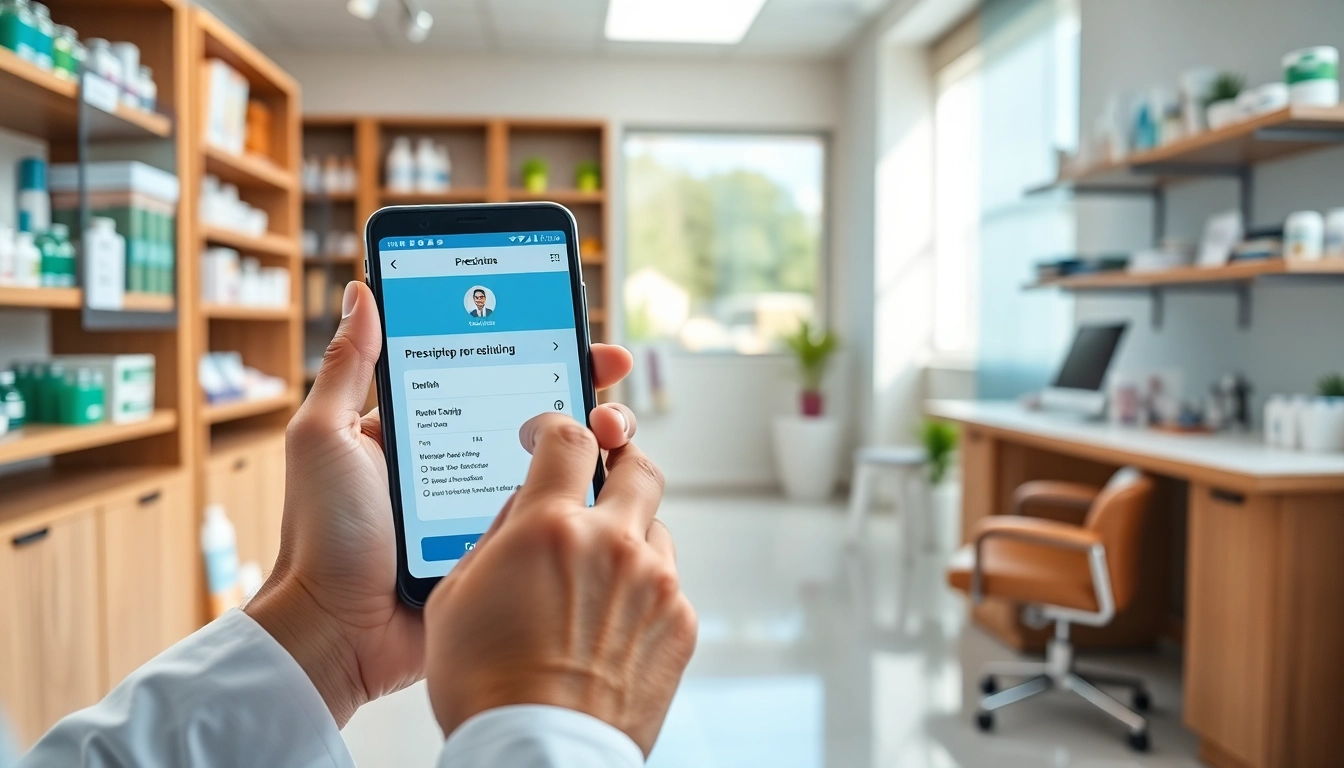Understanding E-Prescription Apps for Android
In the ever-evolving landscape of healthcare technology, eprescription apps for android have emerged as crucial tools for healthcare professionals. They not only streamline the prescribing process but also enhance patient safety and medication adherence. As the healthcare sector leans increasingly toward digital solutions, understanding the intricacies of e-prescription apps becomes essential for practitioners looking to thrive in this modern era.
What Are E-Prescription Apps?
E-prescription apps are digital platforms designed for healthcare providers to write and manage prescriptions electronically. These applications replace traditional paper prescriptions, facilitating a more efficient, less error-prone process. Through these apps, physicians can prescribe medication, view patient medication history, and ensure compliance with drug formulary requirements. The transition from paper to electronic prescriptions not only aids in reducing errors but also eliminates the need for physical paperwork, ultimately improving the workflow in medical practices.
Benefits of Using E-Prescription Apps
The benefits of using e-prescription apps are multifaceted, impacting various stakeholders in the healthcare setting:
- Enhanced Accuracy: E-prescribing minimizes the chances of misinterpretation of handwritten prescriptions, thereby reducing medication errors.
- Improved Efficiency: Prescribing electronically speeds up the prescription process, enabling quicker patient turnover.
- Patient Safety: These apps can alert physicians to potential drug interactions, allergies, and formulary issues.
- Record-Keeping: E-prescription apps facilitate better documentation and tracking of patients’ medication histories, ensuring that their records are accurate and easy to access.
- Patient Engagement: Many e-prescribing apps allow patients to access their prescriptions, which can enhance medication adherence.
How E-Prescription Apps Work
Understanding the functionality of e-prescription apps is key to leveraging their capabilities effectively. E-prescription apps typically involve several steps:
- Login: Healthcare providers log into the app using secure credentials.
- Patient Selection: Providers select a patient from the database, making it easy to view their medical history.
- Prescription Entry: The provider enters the medication details, including dosage, frequency, and duration.
- Transmission: The prescription is electronically transmitted to the patient’s preferred pharmacy.
- Alerts: Should any issues arise, the system provides alerts regarding allergies or potential drug interactions.
- Tracking: The provider can track the status of the prescription, ensuring that it is filled and picked up by the patient.
Key Features of E-Prescription Apps for Android
User-Friendly Interfaces
A standout feature of many e-prescription apps for Android is their user-friendly interfaces. Designed with healthcare professionals in mind, these apps prioritize ease of navigation, allowing users to quickly access relevant features without unnecessary complications. Intuitive layouts and simplified processes minimize training time for new users and reduce frustration, ultimately leading to increased productivity in clinical settings.
Integration with Healthcare Systems
Another vital feature is the ability to integrate seamlessly with existing healthcare management systems. This allows for the sharing of patient information across different departments, leading to a holistic view of a patient’s medical history. Integration with Electronic Health Record (EHR) systems enhances communication between the healthcare provider and pharmacy, thus streamlining workflow and reducing the risk of errors.
Patient Management Capabilities
Robust patient management capabilities are essential for e-prescription apps. These functionalities may include storing patient demographics, tracking past medications, and managing allergies. Such features not only facilitate personalized care but also help in making informed clinical decisions rapidly. By having ready access to essential patient information, healthcare providers can significantly improve patient outcomes.
Choosing the Right E-Prescription App for Android
Factors to Consider
Choosing the appropriate e-prescription app for an Android device involves several critical considerations:
- Compliance: Ensure the app complies with industry regulations, such as HIPAA, to safeguard patient information.
- Cost: Evaluate the cost of the app versus its features. A higher price does not always mean better quality.
- Support and Training: Check if the provider offers customer support and training resources to assist with setup and ongoing use.
- Customization: Look for apps that allow for customization according to specific practice needs.
- User Reviews: Analyze feedback from other healthcare professionals to gauge satisfaction levels.
Top Recommendations
While there is a multitude of e-prescription apps on the market, healthcare practitioners should focus on apps that excel in user experience, integrations, and reliability. Each app has its unique strengths; therefore, it is wise to conduct trials or demos before making a final selection. Recommendations may vary based on specialty, practice size, and specific needs.
User Reviews and Experiences
User experiences can significantly influence the choice of an e-prescription app. Examining reviews on independent platforms can provide insights into usability, reliability, and customer support. It is essential to consider both positive and negative feedback to form a balanced view of the app’s capabilities.
Best Practices for Using E-Prescription Apps
Training Staff Effectively
Effective training is crucial for optimizing the use of e-prescription apps. Healthcare facilities should implement comprehensive training sessions that familiarize the staff with the app’s features, settings, and troubleshooting processes. Ongoing education sessions can be beneficial as updates and new features are rolled out, ensuring that all users are up-to-date.
Ensuring Data Security
Given the sensitive nature of healthcare data, ensuring robust data security is paramount. Organizations should use encryption, access controls, and regular audits to protect patient information. Additionally, training staff on data security best practices helps mitigate risks associated with human error.
Gathering Patient Feedback
Gathering feedback from patients regarding their experiences with the e-prescription process can offer valuable insights. Understanding the patient perspective helps providers identify bottlenecks or issues that may arise in the prescription journey. Regularly soliciting feedback and acting on it can enhance the overall efficacy of the prescribing process.
Future Trends in E-Prescription Apps for Android
Mobile Technology Advancements
The future of e-prescription apps will likely be shaped by advancements in mobile technology. This includes improvements in app interfaces, faster processing speeds, and enhanced capabilities for real-time data sharing. As mobile technology continues to evolve, e-prescription apps will increasingly leverage these advancements to improve efficiency and user experience.
Regulatory Changes
Changes in regulations surrounding medication prescribing and electronic health records will impact the development of e-prescription apps. Staying informed on these changes is vital for healthcare providers, as compliance not only reduces the risk of penalties but also ensures the continued trust of patients.
Enhancements in User Experience
Ongoing user experience (UX) enhancements remain a focal point for the development of e-prescription apps. Future apps will likely incorporate artificial intelligence to streamline workflow processes, reduce cognitive load, and personalize user interactions. An emphasis on user-friendly designs that cater to the varied expertise levels of healthcare professionals will be central to this evolution.



